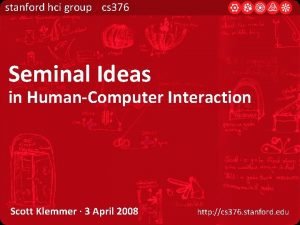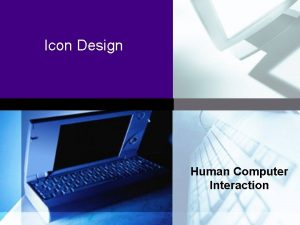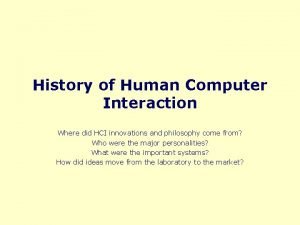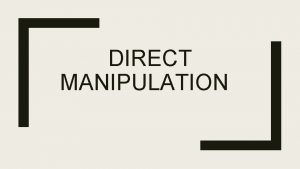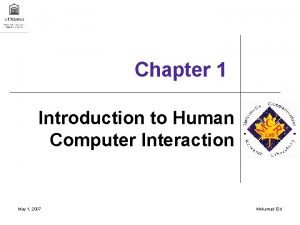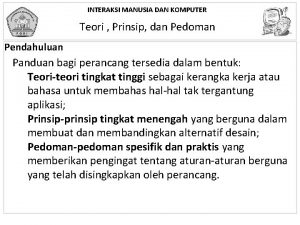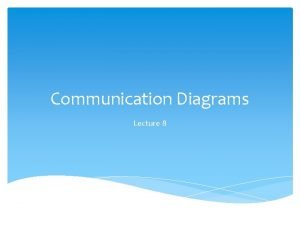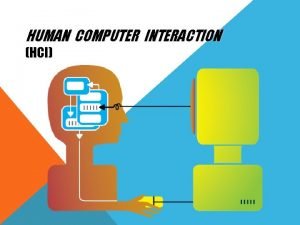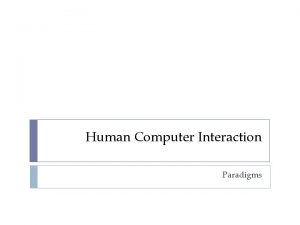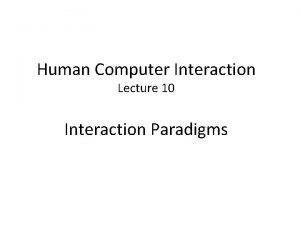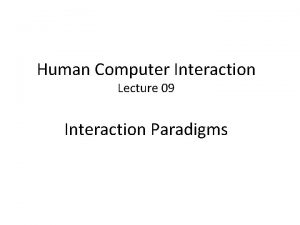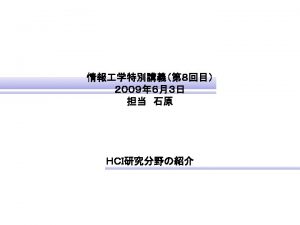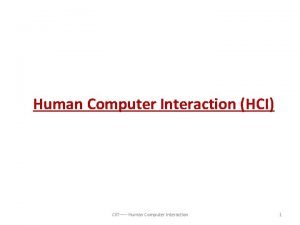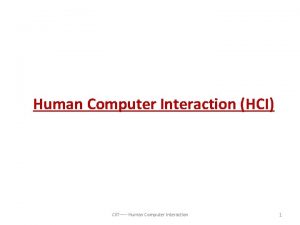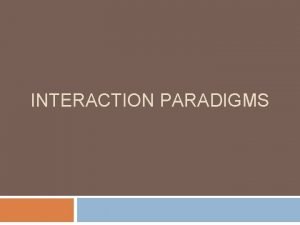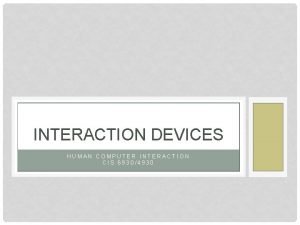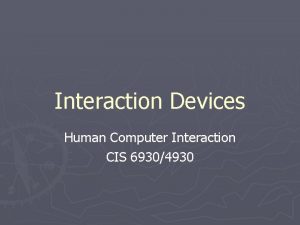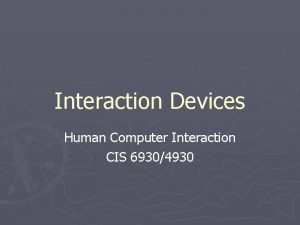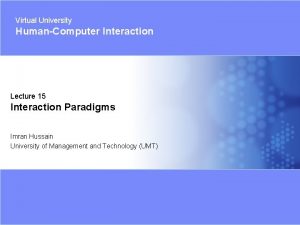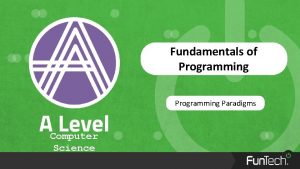Human Computer Interaction Lecture 08 Interaction Paradigms What















- Slides: 15

Human Computer Interaction Lecture 08 Interaction Paradigms

What are Paradigms • New computing technologies arrive, creating a new perception of the human—computer relationship, giving rise to new paradigm shifts • We can trace some of these shifts in the history of interactive technologies. • History of interactive system design provides paradigms for usable designs

The Initial paradigm • Batch processing Impersonal computing

Example Paradigm Shifts • Batch processing • Time-sharing Interactive computing

Example Paradigm Shifts • Batch processing • Timesharing • Networking @#$% ! ? ? ? Community computing

Example Paradigm Shifts • • Batch processing C…P… filename dot star… or was Timesharing it R…M? Networking % foo. bar ABORT Graphical displays dumby!!! Move this file here, and copy this to there. Direct manipulation

Example Paradigm Shifts • • • Batch processing Timesharing Networking Graphical display Microprocessor Personal computing

Example Paradigm Shifts • • • Batch processing Timesharing Networking Graphical display Microprocessor WWW Global information

Example Paradigm Shifts • • Batch processing Timesharing Networking Graphical display Microprocessor WWW Ubiquitous Computing • Computing everywhere

Time-Sharing • 1940 s and 1950 s – explosive technological growth • ARPA financed several research centres in this regard • Consequences of these research efforts include the concept of time sharing – single computer supporting multiple users • True human-computer interaction was possible

Video Display Units • More suitable medium than paper or punch cards • First used in military applications • 1962 – Sutherland's Sketchpad (allow users to draw on a screen with a light pen. ) – By changing something on the display screen, it was possible, via sketchpad, to change something in the computer’s memory. • computers for visualizing and manipulating data • Different representations of same data was possible • Computer was made to speak a more human language, rather human being forced to speak more like a computer

Programming toolkits • 1968 NLS/Augment system demonstration – Engelbart adopted a new method to develop very powerful interactive system with relatively impoverished technology of that time. – NLS system was the first to employ the practical use of hypertext links, the mouse, raster-scan video monitors. • the right programming toolkit provides building blocks to produce complex interactive systems • The power of programming toolkits is that small, wellunderstood components can be composed in fixed ways in order to create larger tools.

Personal computing • Enabling productivity for mass novice users • First demonstration of this in 1970 s – Papert's LOGO language for simple graphics programming by children – Based on a model that children could understand – A computer controlled mechanical turtle used for drawing different geometrical shapes

Window systems and the WIMP interface • Humans can pursue more than one task at a time • A personal computer which forced the user through all of the tasks needed to achieve some objective from beginning to end without any diversion was not appropriate • To be an effective partner, a PC needs to support multiple threads of activity simultaneously • A computer system needed to present the context of each activity so that user can distinguish them

Window systems and the WIMP interface • Solution: Separate the physical presentation of different logical threads on display device • The window is the mechanism for these physically and logically separate display spaces • windows, icons, menus and pointers now familiar interaction mechanisms • First appeared in 1981 – Xerox Star first commercial windowing system
 Batch processing in hci
Batch processing in hci Mit csail hci course review
Mit csail hci course review Symbol of hci
Symbol of hci Visual channel in hci
Visual channel in hci History of hci
History of hci Direct manipulation definition
Direct manipulation definition Human computer interaction chapter 1
Human computer interaction chapter 1 Pola pikir desainer imk dibawah ini adalah
Pola pikir desainer imk dibawah ini adalah Prinsip interaksi manusia dan komputer
Prinsip interaksi manusia dan komputer Human computer interaction syllabus
Human computer interaction syllabus Pengertian human computer interaction
Pengertian human computer interaction Alan dix
Alan dix Communication diagrams
Communication diagrams Ergonomics in human computer interaction
Ergonomics in human computer interaction Hci merupakan
Hci merupakan 01:640:244 lecture notes - lecture 15: plat, idah, farad
01:640:244 lecture notes - lecture 15: plat, idah, farad

